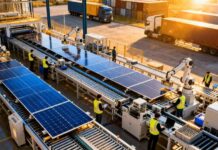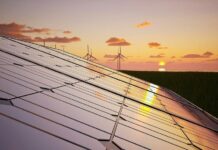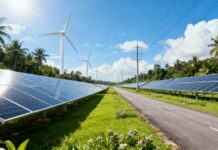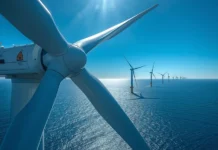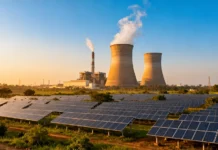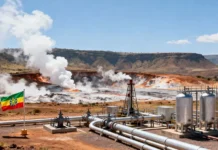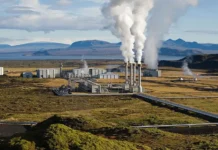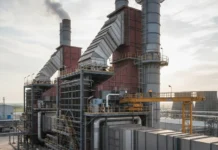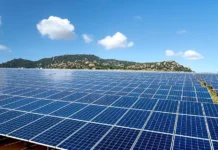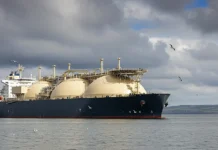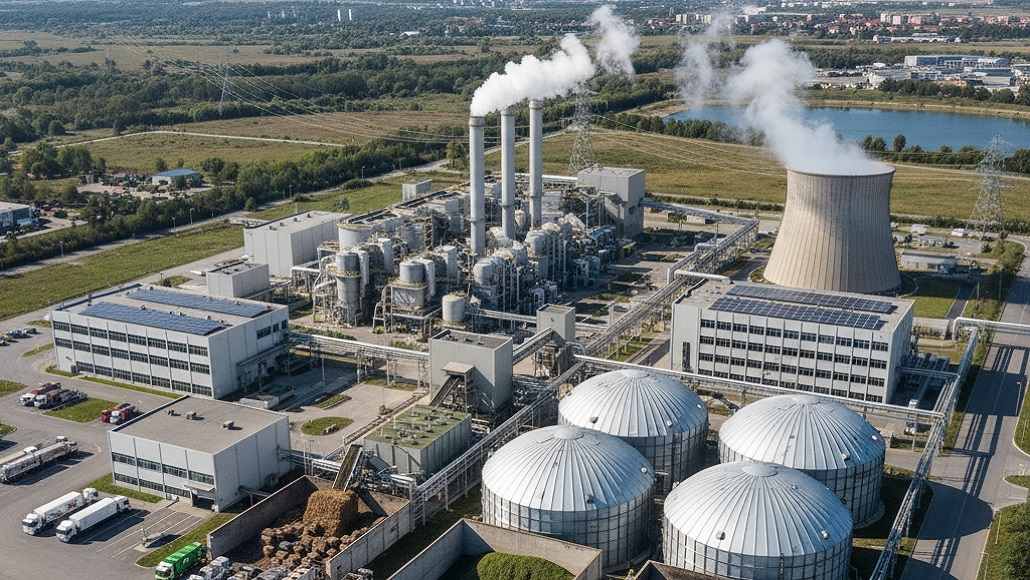Bioenergy & Waste Valorization: The Overlooked Pillar of Clean Power
While solar panels and wind turbines capture headlines in renewable energy discussions, bioenergy waste valorization operates quietly in the background as an indispensable component of comprehensive clean energy strategies. This often-overlooked pillar transforms organic waste streams—from agricultural residues and municipal solid waste to industrial byproducts and sewage—into valuable energy products while simultaneously addressing waste management challenges. As the Middle East and nations worldwide pursue net-zero emissions targets, bioenergy and waste-to-energy technologies are emerging as critical enablers of circular economy principles that maximize resource utilization while minimizing environmental impacts.
The Scale of Waste Energy Opportunity
The Middle East waste-to-energy market, valued at 1.78 billion dollars in 2024, is projected to reach 2.48 billion dollars by 2033, expanding at a compound annual growth rate of 3.7 percent as regional governments accelerate landfill reduction and clean energy goals. The United Arab Emirates leads the sector, capturing nearly 47 percent of 2024 revenue, driven by ambitious sustainability goals under the UAE Energy Strategy 2050 and the Circular Economy Policy 2031.
Flagship projects including the Dubai Waste Management Centre, positioned as the world’s largest single-site waste-to-energy facility, are central to reducing landfill dependence and generating renewable electricity from municipal waste. In Sharjah, Bee’ah and Masdar’s waste-to-energy plant further illustrates the country’s leadership in deploying advanced incineration and energy recovery technologies. Strong government backing, favorable policies, and strategic partnerships with global technology providers have positioned the UAE as a hub for regional waste valorization.
India generates over 150,000 tonnes of municipal solid waste daily from growing urbanization and industrialization. Through waste to energy technologies, the country is transforming this burden into clean energy solutions producing electricity, biogas, compressed biogas, biocoal, and direct heat. The National Bio-Energy Programme launched by the Ministry of New and Renewable Energy provides financial and technical support for biomass and bioenergy projects across India, including three sub-schemes covering waste to energy, biomass, and biogas programs.
Kuwait faces mounting pressure to diversify its energy mix, reduce landfill dependency, and meet climate targets under Vision 2035. Despite producing over 2.6 million tonnes of organic waste annually including food and agricultural residues, sewage, and petroleum sludge, bioenergy currently remains absent from Kuwait’s energy portfolio. Modeling scenarios for treating 50 percent of Kuwait’s organic waste via anaerobic digestion estimate 394 gigawatt-hours of renewable electricity annually, 197,538 tonnes of carbon dioxide-equivalent emissions avoided, and over 1.81 billion dollars in profit over 20 years.
Waste-to-Energy Technology Pathways
Mass-burn incineration systems represent the most common waste-to-energy approach in the United States and many other countries. These systems burn unprocessed municipal solid waste in large incinerators with boilers and generators to produce electricity. For every 100 pounds of municipal solid waste in the United States, approximately 85 pounds can be burned as fuel to generate electricity. Waste-to-energy plants reduce 2,000 pounds of garbage to ash weighing between 300 and 600 pounds, reducing waste volume by approximately 87 percent.
The process involves seven steps: waste dumped from garbage trucks into large pits; a giant crane claw grabbing waste and dumping it into combustion chambers; waste burning and releasing heat; heat turning water into steam in boilers; high-pressure steam turning turbine generator blades to produce electricity; air pollution control systems removing pollutants from combustion gas before release through smokestacks; and ash collection from boilers and air pollution control systems.
Gasification and pyrolysis technologies thermochemically decompose organic materials in the absence of oxygen to produce syngas, a synthetic gas primarily composed of hydrogen, carbon monoxide, and small amounts of carbon dioxide. This syngas can be converted into methane, methanol, ethanol, or synthetic fuels for use in various industrial processes or as alternative transportation fuels. These processes offer advantages over direct combustion including more complete conversion of carbon content to useful energy and reduced emissions of certain pollutants.
Anaerobic digestion, a biological process, converts organic waste into biogas mainly composed of methane and carbon dioxide through microbial action. This biogas can be harnessed for energy production or processed into biomethane serving as a natural gas substitute. The digestate remaining after anaerobic digestion provides valuable organic fertilizer for agricultural applications, creating additional value from waste streams.
Biomass Energy from Agricultural Residues
Agricultural waste including crop residues, animal manure, and food processing byproducts represents vast untapped energy resources. The Ningxia Baofeng Energy Group project in India utilizes biomass as efficient fuel for energy production, powered by innovations that make low thermal value waste usable. What was previously burned as waste on fields or left rotting suddenly has value, increasing income for local farmers.
The project purpose centers on utilizing available regional biomass as efficient fuel for energy production. The unique aspect lies in using waste with low thermal value that was previously burned or left rotting on fields, polluting the environment and releasing greenhouse gases. The project creates over 400 jobs in the region while farms receive additional income for providing power plants with agricultural waste. After waste burning in power plants, ash is used as fertilizer and further energetically utilized, encouraging farmers who buy fertilizer to practice biological agriculture.
Date palm agroindustrial residues in Middle Eastern countries present particular opportunities for biorefinery development. Research has examined how various residues from date palm can be utilized in biorefinery platforms to produce ethanol, methane, and lignin. This valorization approach transforms agricultural waste from disposal problems into valuable renewable fuel feedstocks.
Used cooking oil collection from restaurants and food service establishments provides feedstock for biofuel production. Chevron, Sheetz, and Restaurant Technologies collaborate to establish circular economies by converting used cooking oil into biofuels. The consumption of french fries and other fried foods provides the feedstock that, through transesterification processes, becomes biofuels blended with traditional petroleum diesel or used at 100 percent concentration.
Municipal Solid Waste Valorization
Municipal solid waste contains biomass or biogenic materials including paper, cardboard, food waste, grass clippings, leaves, wood, and leather products alongside nonbiomass combustible materials like plastics. In 2018, approximately 12 percent of the 292 million tons of municipal solid waste produced in the United States was processed in waste-to-energy plants. This percentage represents substantial untapped potential as waste management strategies evolve to prioritize energy recovery over landfilling.
Waste-to-energy serves dual purposes: producing electricity while reducing what would otherwise be buried in landfills. Many European countries and Japan use waste-to-energy plants widely, partly because those countries have little open space for landfills. The space constraints driving adoption in land-limited regions increasingly apply globally as suitable landfill sites become scarcer and public opposition to new landfills intensifies.
Refuse-derived fuel production processes municipal solid waste to remove noncombustible materials, creating concentrated fuel products with higher energy content than unprocessed waste. This preprocessing improves combustion efficiency and emissions control while recovering recyclable materials before combustion. The processed fuel can be used in dedicated waste-to-energy facilities or co-fired with coal in existing power plants, providing flexibility in deployment.
The Dubai Waste Management Centre exemplifies large-scale municipal waste valorization integrated with urban infrastructure. The facility processes waste from one of the world’s most rapidly growing cities while generating renewable electricity that feeds into the grid, demonstrating how waste-to-energy can be seamlessly integrated into metropolitan energy systems.
Industrial Waste Streams and Circular Economy
Industrial processes generate diverse waste streams suitable for energy recovery. Petroleum refining produces petroleum coke and sludges that can fuel gasification systems. Chemical manufacturing generates organic waste streams convertible through anaerobic digestion or thermal processes. Food processing creates organic residues ideal for biogas production.
The circular economy framework emphasizes keeping products and materials in circulation through processes including maintenance, reuse, refurbishment, remanufacture, recycling, and composting. Bioenergy waste valorization fits perfectly within this model by transforming materials at the end of their initial use phase into new energy products rather than disposing of them as waste.
Reducing resource consumption and waste generation protects the environment through less dispersion of pollutants and lower greenhouse gas emissions. The circular economy model moves beyond linear take-make-dispose structures to create regenerative systems good for business, people, and the environment. Only by transforming every element of current systems—how resources are managed, how products are made and used, and what happens with materials afterwards—can thriving circular economies that benefit everyone within planetary limits be created.
For the biofuels industry, capture and use of fossil carbon plays key roles in supporting circular economy transitions. The opportunity to transform the biggest consumable waste into high-valued products represents fundamental paradigm shifts from viewing carbon as a problem to recognizing it as a resource.
Environmental Benefits and Emissions Reduction
Bioenergy waste valorization delivers substantial greenhouse gas emissions reductions compared to landfilling organic waste. When organic materials decompose anaerobically in landfills, they produce methane, a greenhouse gas approximately 28 times more potent than carbon dioxide over 100-year timeframes. Capturing this methane for energy use or preventing its formation through alternative waste treatment dramatically reduces climate impacts.
Controlled combustion in waste-to-energy facilities with modern air pollution control systems produces fewer emissions than open burning or uncontrolled decomposition. Advanced scrubbing technologies, fabric filters, and selective catalytic reduction systems remove particulates, acid gases, nitrogen oxides, and other pollutants to levels meeting stringent environmental standards.
The displacement of fossil fuels through bioenergy production creates additional emissions benefits. Every megawatt-hour of electricity generated from waste reduces the need for fossil fuel power generation, multiplying the climate benefits beyond waste management improvements alone. Kuwait’s modeled anaerobic digestion scenario avoiding nearly 200,000 tonnes of carbon dioxide-equivalent emissions annually demonstrates the substantial climate mitigation potential.
Waste-to-energy contributions to circular economy principles enable sustainable resource management that reduces environmental footprints across entire product lifecycles. By viewing waste as a resource rather than a disposal problem, societies can dramatically reduce material consumption, lower emissions, and create economic value from streams that previously represented only costs and environmental burdens.
Economic Value Creation and Job Development
The waste-to-energy sector creates economic value through multiple pathways. Revenue from electricity sales provides primary returns on capital investment. Tipping fees charged for waste disposal provide additional revenue streams that often exceed electricity sales in overall project economics. Avoided landfill costs including land acquisition, construction, monitoring, and long-term liability represent substantial savings for municipalities adopting waste-to-energy solutions.
Job creation spans construction, operations, maintenance, waste collection and sorting, and supporting services. The Ningxia Baofeng project created over 400 regional jobs while providing farmers with additional income for supplying biomass. These employment opportunities prove particularly valuable in rural areas where economic diversification options may be limited.
Technology development and equipment manufacturing create high-value employment in engineering, research and development, and advanced manufacturing. As waste-to-energy deployment expands globally, companies developing and supplying technology capture substantial economic value while building exportable expertise.
The projected growth of the Middle East waste-to-energy market to 2.48 billion dollars by 2033 represents significant investment and economic activity. This expansion creates opportunities for both international technology providers and local firms developing regional capabilities and expertise.
Policy Frameworks Enabling Deployment
Successful waste-to-energy deployment requires supportive policy frameworks addressing multiple dimensions. Renewable energy targets that include bioenergy alongside solar and wind ensure waste-to-energy receives appropriate recognition and support within clean energy portfolios. Feed-in tariffs or power purchase agreements providing long-term revenue certainty improve project financial viability and attract private investment.
Landfill restrictions or fees that make disposal expensive relative to waste-to-energy processing create economic incentives favoring energy recovery. The UAE’s Circular Economy Policy 2031 provides comprehensive frameworks supporting waste valorization as strategic priorities. Saudi Arabia’s Vision 2030 incorporates waste-to-energy projects as part of broader strategies to diversify energy mixes, reduce landfill usage, and address rising waste generation from urban and industrial expansion.
Permitting streamlining reduces development timelines and costs while maintaining environmental protections. Clear air quality standards and monitoring requirements ensure facilities operate within acceptable parameters while providing certainty to developers regarding compliance expectations. Waste quality specifications establish minimum standards for feedstocks, protecting facility operations from incompatible or hazardous materials[.
The National Bio-Energy Programme in India offering capital subsidies and support for biogas plants, biomass-based power generation, and waste conversion technologies demonstrates how government financial support can accelerate deployment. These programs reduce barriers to entry while demonstrating political commitment to bioenergy development.
Integration with Renewable Energy Systems
Bioenergy waste valorization complements variable renewable energy sources by providing dispatchable power available on demand. While solar and wind generation fluctuate with weather conditions, biogas plants and waste-to-energy facilities can operate continuously or adjust output based on grid needs. This dispatchability makes bioenergy particularly valuable for grid stability as renewable penetration increases.
Hybrid systems integrating bioenergy with solar and wind can achieve higher overall renewable energy shares than any single technology alone. Excess solar generation during midday can power electrolyzers producing hydrogen for seasonal storage, while biogas provides overnight power when solar is unavailable and wind conditions are calm. This complementarity maximizes renewable resource utilization across all timeframes.
Waste-to-energy facilities located near consumption centers reduce transmission requirements compared to utility-scale solar and wind farms often sited in remote locations. This distributed generation approach improves grid resilience while reducing transmission losses and infrastructure costs.
The Path Forward for Bioenergy Advancement
Bioenergy waste valorization represents an essential yet often underappreciated component of comprehensive clean energy transitions. Its unique combination of waste management, emissions reduction, dispatchable generation, and circular economy benefits creates value propositions that extend far beyond electricity production alone. As societies grapple with mounting waste challenges alongside decarbonization imperatives, technologies that address both simultaneously become increasingly strategic.
The Middle East’s growing investment in waste-to-energy infrastructure, supported by ambitious national visions and circular economy frameworks, positions the region to lead in sustainable waste management while diversifying energy portfolios. Success depends on continued policy support, technology advancement, public acceptance, and integration with broader renewable energy and sustainability strategies.
The overlooked pillar of bioenergy must receive greater recognition and investment commensurate with its multifaceted contributions to sustainable development. From agricultural fields to city streets, from industrial facilities to sewage treatment plants, opportunities abound to transform waste into valuable renewable fuels. Realizing this potential requires concerted efforts spanning technology development, policy innovation, infrastructure investment, and mindset shifts that reimagine waste not as a problem to be disposed but as a resource to be valorized in service of circular, sustainable economies.



